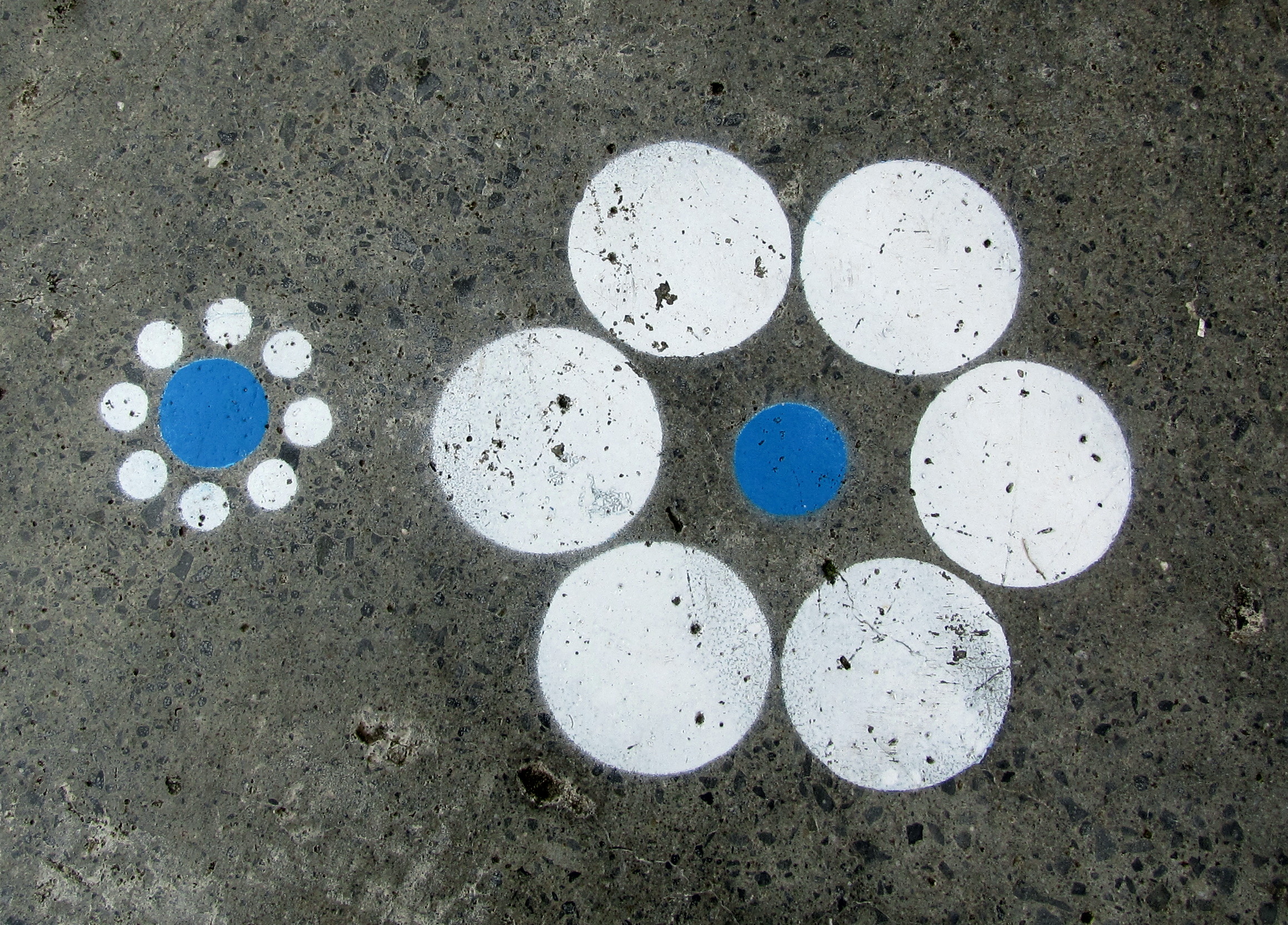We spend a lot of time comparing ourselves with others but despite that we’re often not very good at it. For example, here are three comparisons that people regularly make.
Apples and oranges
A new PhD student compares their first draft of a piece of writing with an article in a top journal written by three eminent professors.
A person who starts a new job compares their performance with someone who has been doing it for 20 years.
A person decides to take up painting and compares their first effort with the Mona Lisa.
Obviously, if you compare yourself to leaders in the field, to the superstars, or just to people who have much more experience than you, then you are going to come off badly.
Myopia – Short-sightedness
We tend to look just at our immediate group for comparisons.
The blue circle on the left seems quite big when it is surrounded by smaller white ones. Yet the same circle seems small when surrounded by those bigger ones on the right. Both blue circles are the same but the context makes one look bigger or smaller.
So if you want to look clever, hang around with stupid people.
If you want to look fit, hang around with unfit people.
And of course the reverse also happens. Let’s say a student has been top of their class in high school. They feel really intelligent. They go to university and now they are surrounded by lots of clever people. They don’t feel so bright any more. And then they continue hanging around with ever-more clever people. People who have a Masters degree or a PhD. They haven’t got more stupid – it just feels that way because the comparison group is smarter.
Insides and outsides
We’re very selective in what we compare. We tend to compare the insides of ourselves with the outsides of others. Our insides e.g. our worries and doubts, our imposter feelings, the slight slip-ups that nobody but us notices, are compared with the competent exterior that others portray, their effortless successes and their obvious self-confidence.
If you want to experience this, just read someone’s curriculum vitae. It reads like a series of inevitable successes. All the awards they’ve received, the important roles they’ve performed and the glowing references – without ever a hint of a setback or failure. And then we look at our own experiences. Jobs we didn’t get. Projects that didn’t turn out well. Qualifications we don’t have.
In April 2016, Johannes Haushofer, an Assistant Professor at Princeton University published his CV of failures to highlight the distorted view we get when reading other people’s CVs.
Social media tends to amplify this. When we look at other people’s profiles all we see are the highlights, what seems like a series of peak experiences. While in our own lives we are well aware of the many valleys. So it looks like everyone else is having a great time while we are just wasting time.
So three actions
- Compare apples with apples
- Get a ruler and measure those blue circles. Use an objective standard.
- Stop comparing your insides to other people’s outsides.

